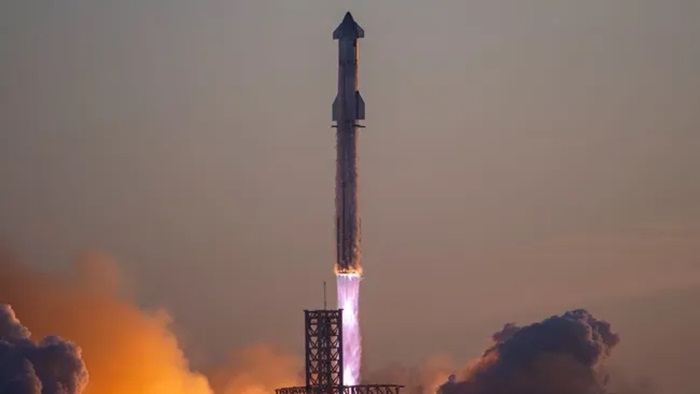
Elon Musk, who has set his sights on colonizing Mars, said that at least a hundred Starships and ideally three hundred would be required per year to be able to produce these at the same rate as Boeing produces planes thirty years from now.
The heart of Musk’s Mars colonization strategy lies in SpaceX‘s Starship, a reusable spacecraft designed for long-haul space travel.
Starship can carry heavy cargo and up to a hundred people to Mars, significantly reducing the cost and complexity of interplanetary transportation. Musk envisions a fleet of Starships regularly shuttling between Earth and Mars, enabling the rapid and sustainable transfer of people, supplies, and materials.
“To achieve Mars colonization in roughly three decades, we need ship production to be 100/year, but ideally rising to 300/year,” Musk wrote. This means that the production rate of Starships would be similar to the rate by which Boeing produces planes.
The super heavy booster can be used more frequently than the ship, as it returns in about ~6 minutes and can theoretically be ready for reflght in an hour.
The ship needs to complete at least one orbit, but often several to have the ground track line back up with the launch…
— Elon Musk (@elonmusk) December 29, 2023
Musk’s ambition: a thousand Starships en route to Mars
The program aims to send a million people to Mars using a thousand Starships sent during a Mars launch window. Proposed journeys would require 80 to 150 days of transit time, averaging approximately 115 days (for the nine synodic periods occurring between 2020 and 2037).
This sounds a long way off. SpaceX is still working on getting Starship into orbit or close to it, an achievement that appears to be possible this year.
Starship, which stands about 400 feet (122 meters) tall when fully stacked, is designed to be fully reusable. Indeed, Musk wants Starship’s huge Super Heavy booster to land directly on its launch mount after liftoffs, and enable rapid inspection, refurbishment, and reflight.
Starship’s two test flights lifted off from SpaceX’s Starbase facility in South Texas in April and November of last year, respectively. Both missions aimed to send the vehicle’s upper stage most of the way around Earth, with splashdown targeted for a patch of the Pacific near Hawaii.
SpaceX launched 96 orbital missions in 2023, a big jump from its previous high of 61, which was set a year earlier. In addition, SpaceX is planning another big leap in 2024. This is one that will take it well above the century mark.
“As we look to next year, we want to increase [our] flight rate to about 12 flights per month, or 144 flights,” Bill Gerstenmaier, SpaceX’s vice president of build and flight reliability, said on October 18th during a hearing of the U.S. Senate’s Subcommittee on Space and Science.
That works out to one launch every 2.8 days, a cadence that would have been unthinkable just a few years ago.
The first stage of Musk’s Mars colonization plan involves sending unmanned Starships to Mars to establish a basic infrastructure. These missions would focus on identifying potential landing sites, assessing resource availability, and deploying critical equipment such as power systems, life support modules, and communication networks.
Once the initial infrastructure is in place, SpaceX will send crewed Starship missions to Mars. These missions would transport astronauts, scientists, and engineers who would begin constructing more permanent habitats, expanding the base’s capabilities, and establishing local resources for food production and energy generation.
See all the latest news from Greece and the world at Greekreporter.com. Contact our newsroom to report an update or send your story, photos and videos. Follow GR on Google News and subscribe here to our daily email!



